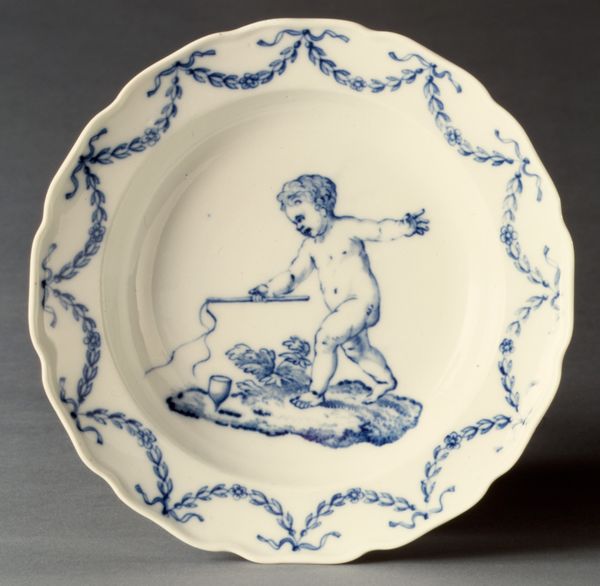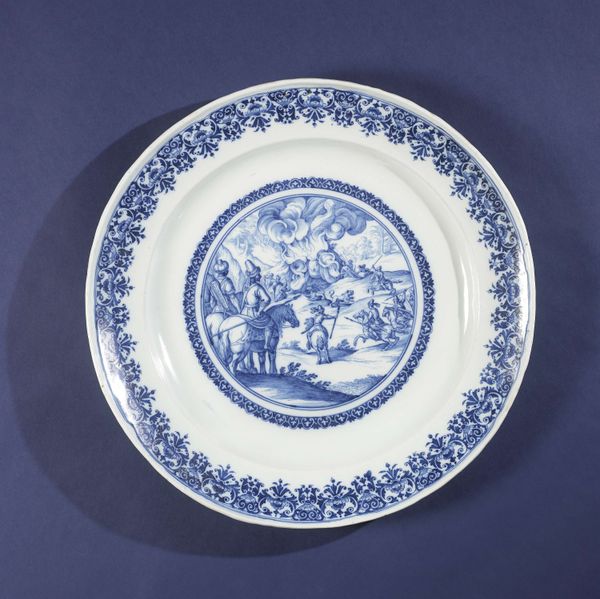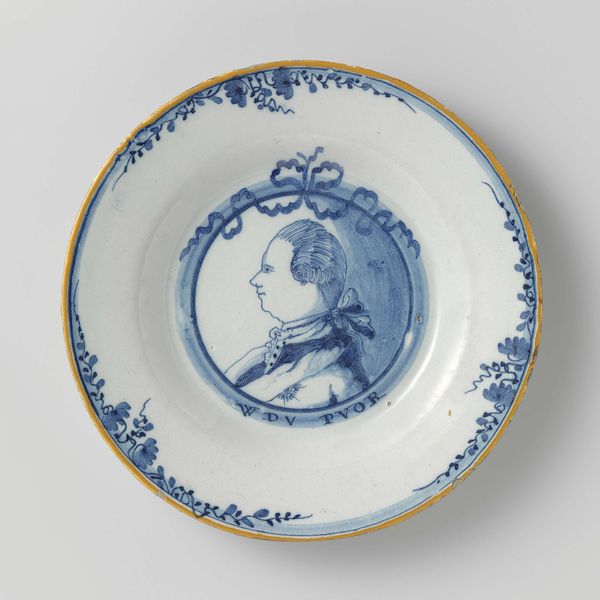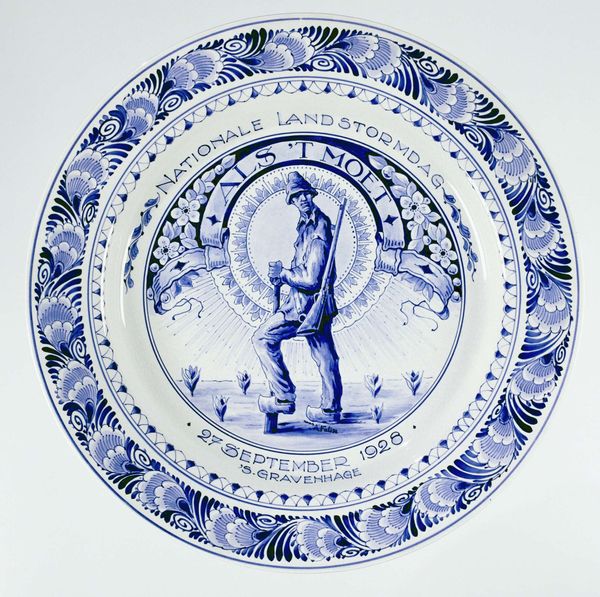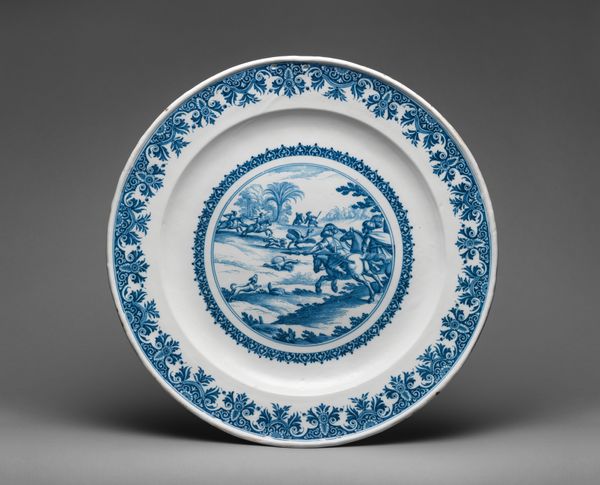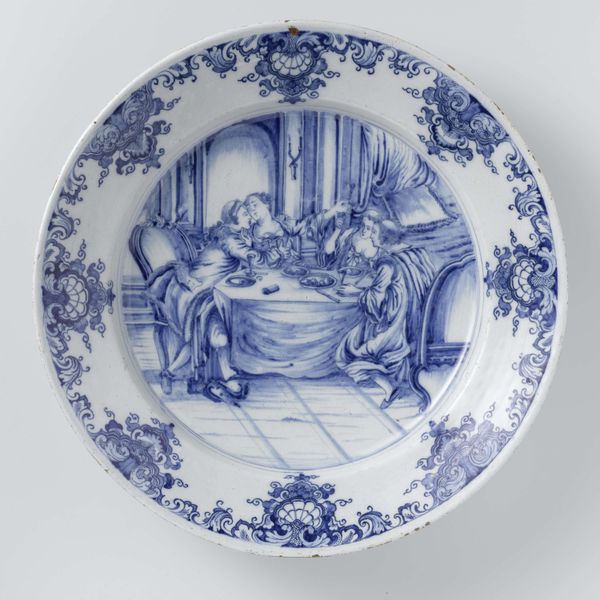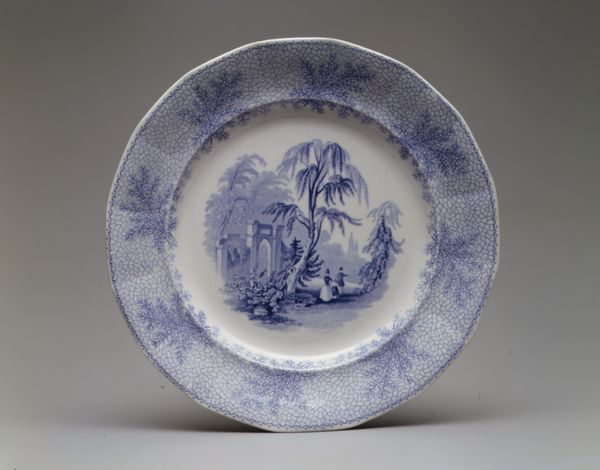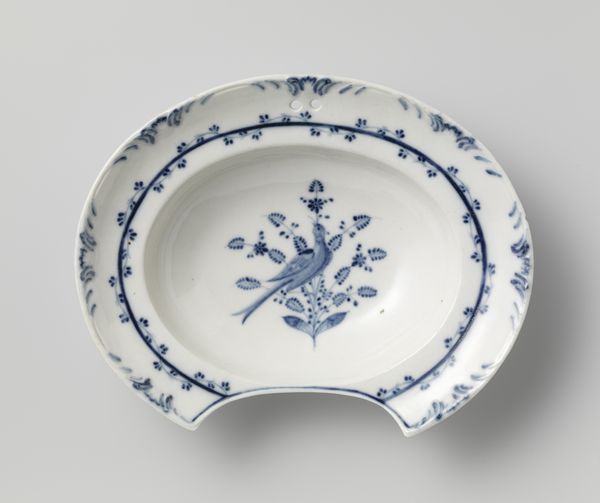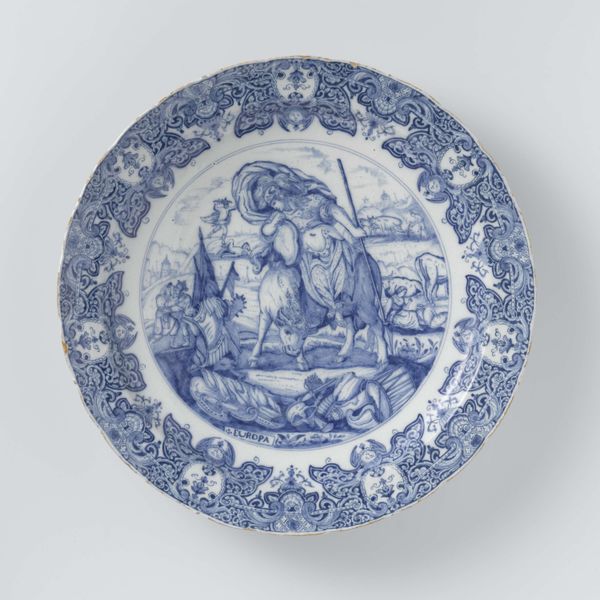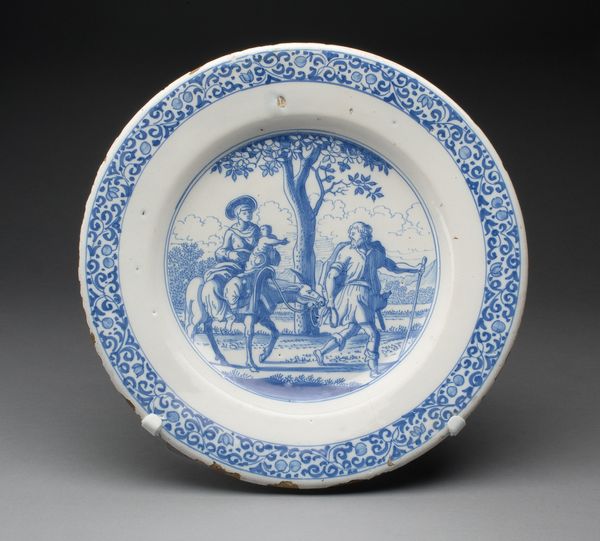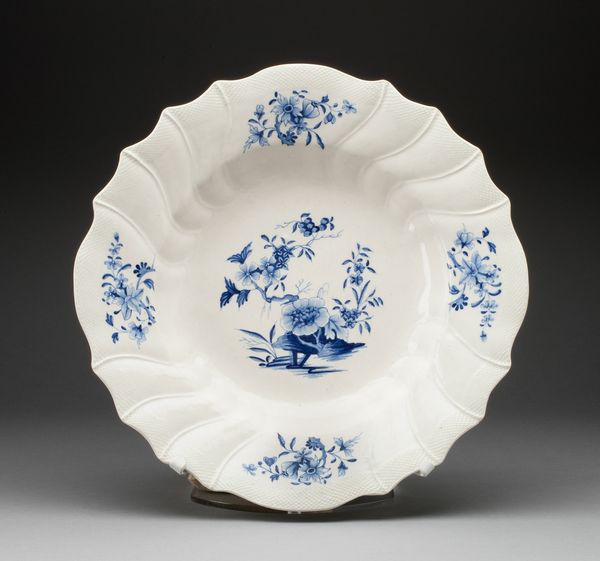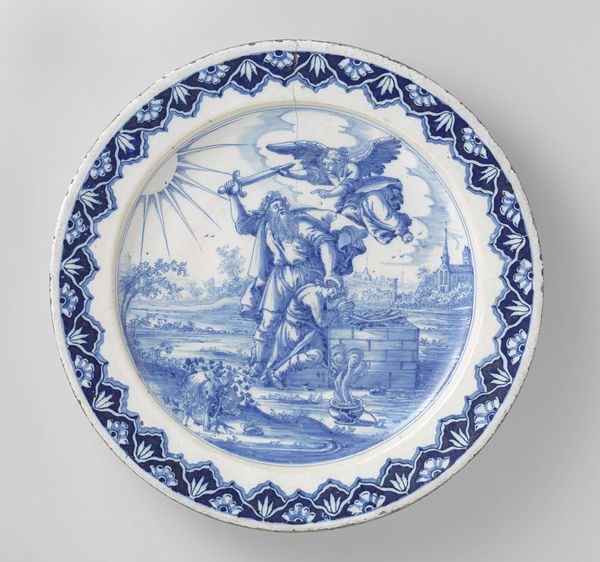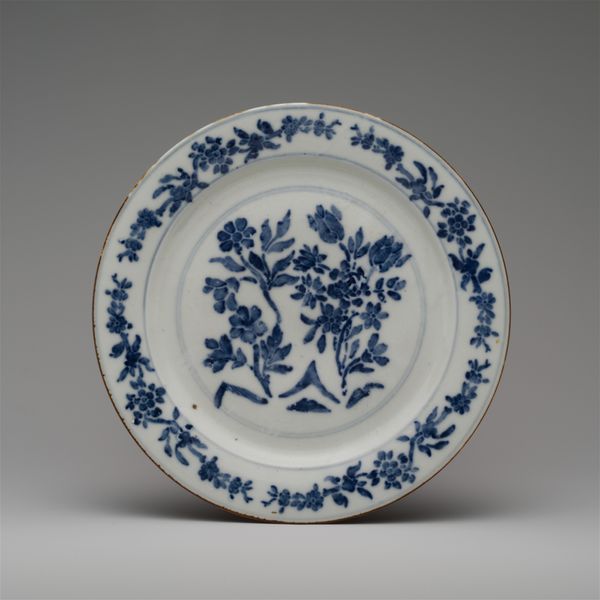
ceramic, porcelain
decorative element
ceramic
porcelain
figuration
ceramic
decorative-art
nude
rococo
Dimensions: Diameter: 9 1/4 in. (23.5 cm)
Copyright: Public Domain
Editor: Here we have a delicate porcelain plate made by Meissen Manufactory, sometime between 1760 and 1775. What strikes me is the central figure—a cherubic child rendered in a distinctive blue against the white porcelain. What's your interpretation of this piece, seen through a historical lens? Curator: It's a fascinating example of Rococo artistry applied to functional objects. Meissen, of course, held tremendous social and cultural capital as the first European producer of hard-paste porcelain. The nude child points to a revival of classical themes and aesthetics, which gained traction within aristocratic circles, seeking a romanticised past as a means of reflecting contemporary opulence and power. Editor: So, you're saying that even everyday items, like this plate, served to project status? Curator: Absolutely. Porcelain itself was a symbol of wealth and refinement. What makes you think of it's public role? The decoration with floral festoons and this particular child figure likely draws on classical or mythological themes, which would have appealed to educated elites. Think about where and when this object may have been consumed or put on display: What social performances or aspirational narratives were the goal for its display? Editor: That makes perfect sense. I was initially focusing on the individual artistry but hadn't considered how the plate, as a collectible piece, bolstered social standing through a knowledge of classicism, itself deployed in these 'public' displays. Curator: Exactly. We must remember that taste, then as now, is rarely innocent, it has a social life, even on a plate. So what are the implications in this imagery when these decorative items spread in production? Editor: Food for thought, indeed. I hadn't thought about it this way before, but this plate seems less a simple decoration and more a cultural artefact. Curator: Precisely. That’s why understanding an object’s history helps unlock richer interpretations.
Comments
No comments
Be the first to comment and join the conversation on the ultimate creative platform.
